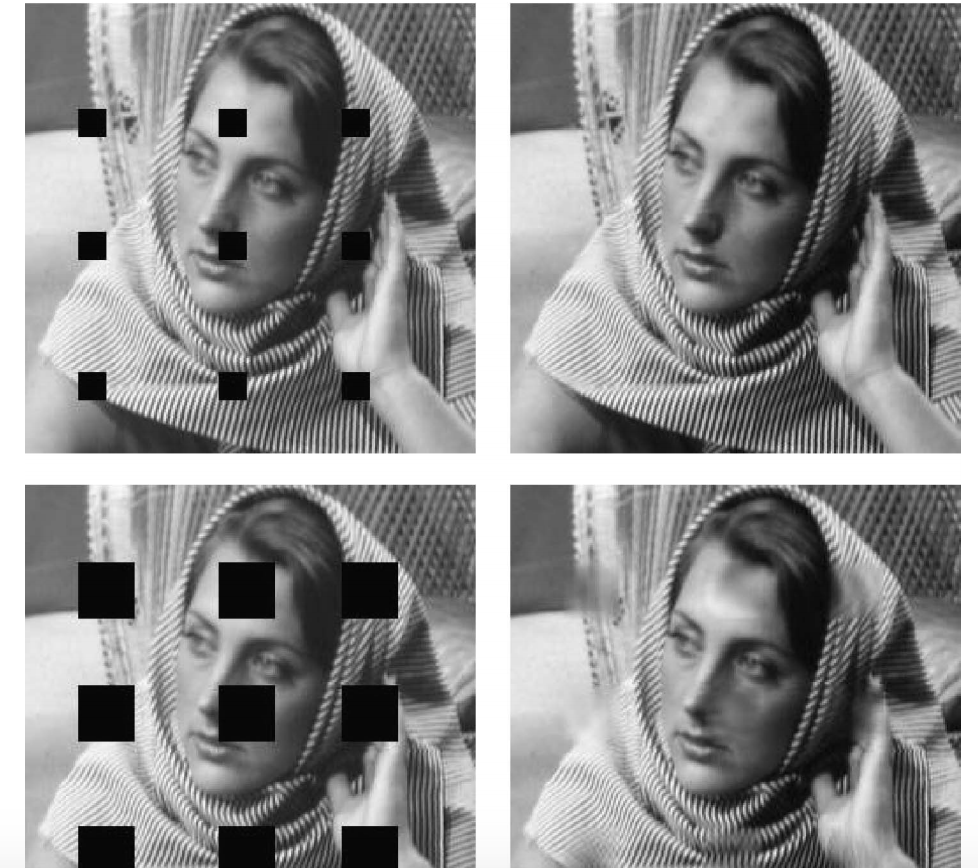| Authors: | M. Elad, J.-L. Starck, P. Querre, D.L. Donoho |
| Journal: | ACHA |
| Year: | 2005 |
| Download: | Science Direct |
Abstract
This paper describes a novel inpainting algorithm that is capable of filling in holes in overlapping texture and cartoon image layers. This algorithm is a direct extension of a recently developed sparse-representation-based image decomposition method called MCA (morphological component analysis), designed for the separation of linearly combined texture and cartoon layers in a given image (see [J.-L. Starck, M. Elad, D.L. Donoho, Image decomposition via the combination of sparse representations and a variational approach, IEEE Trans. Image Process. (2004), in press] and [J.-L. Starck, M. Elad, D.L. Donoho, Redundant multiscale transforms and their application for morphological component analysis, Adv. Imag. Electron Phys. (2004) 132]). In this extension, missing pixels fit naturally into the separation framework, producing separate layers as a by-product of the inpainting process. As opposed to the inpainting system proposed by Bertalmio et al., where image decomposition and filling-in stages were separated as two blocks in an overall system, the new approach considers separation, hole-filling, and denoising as one unified task. We demonstrate the performance of the new approach via several examples.

